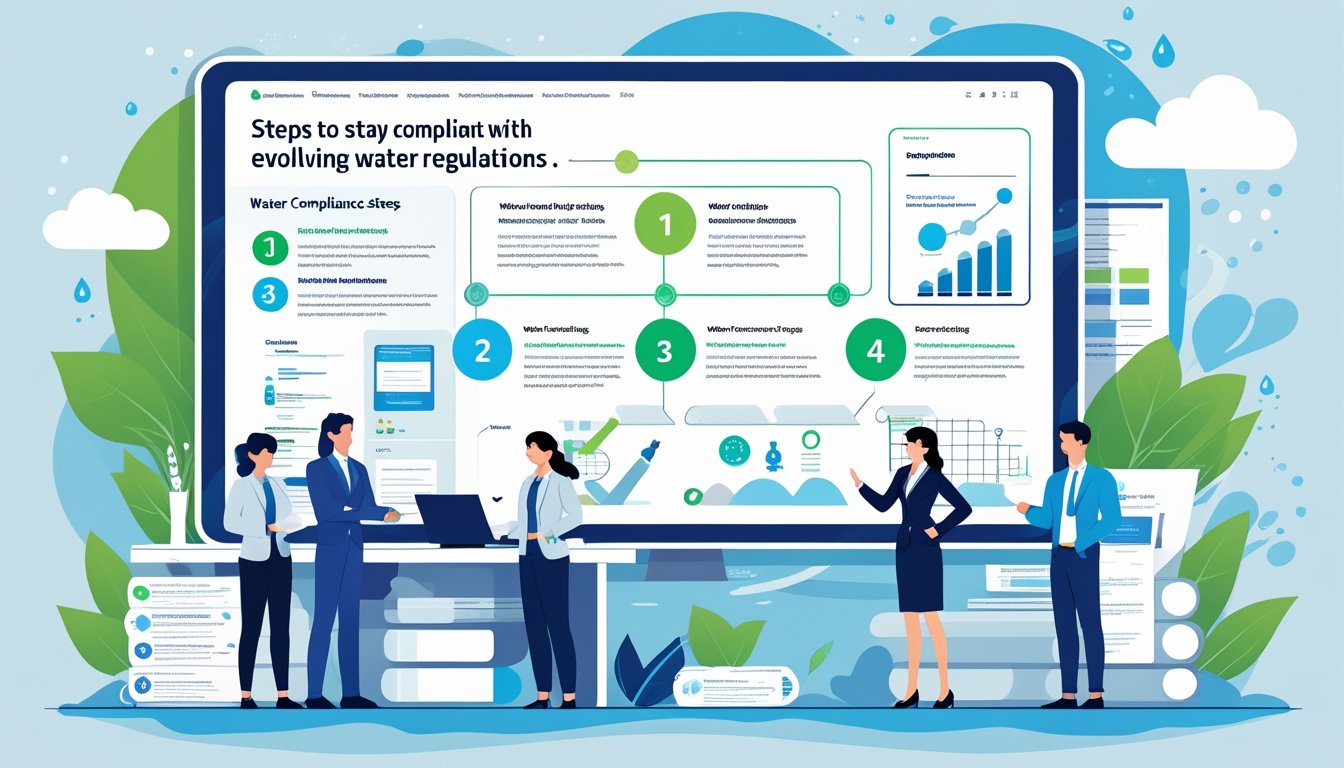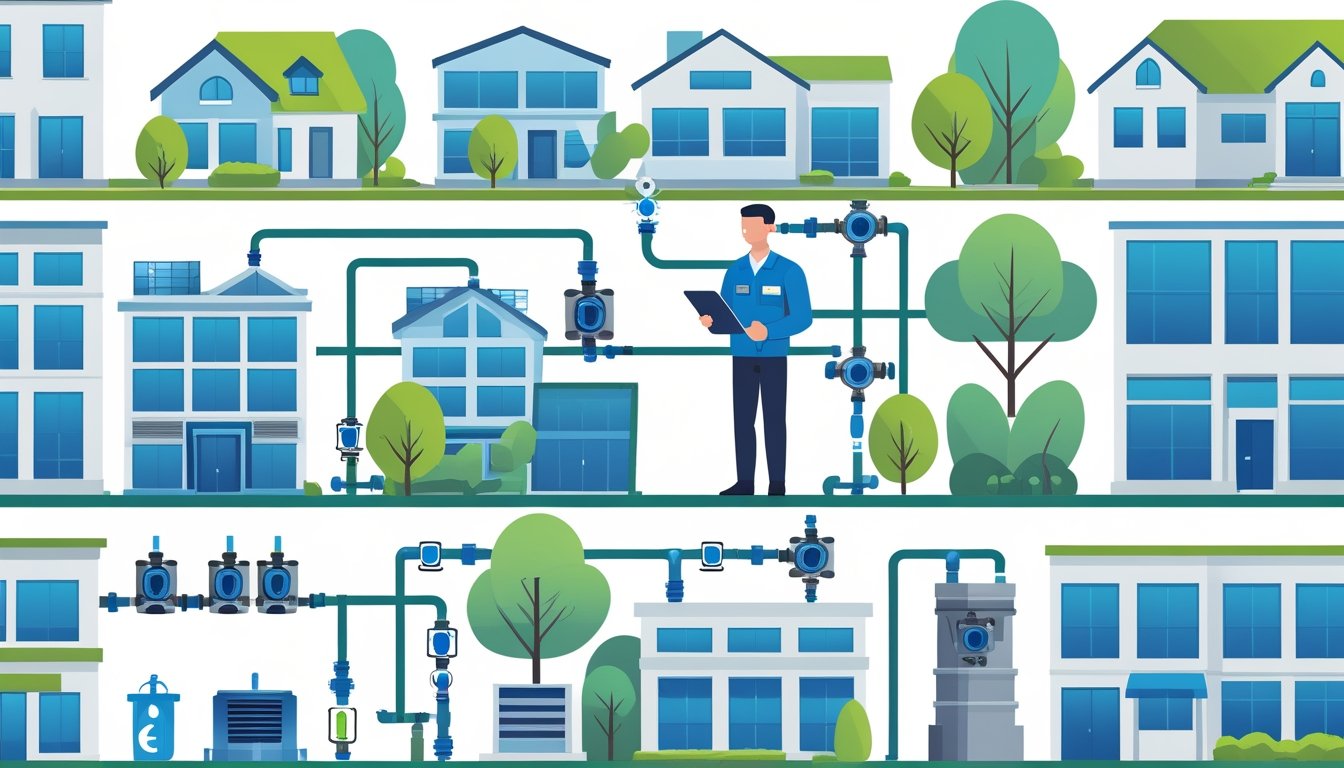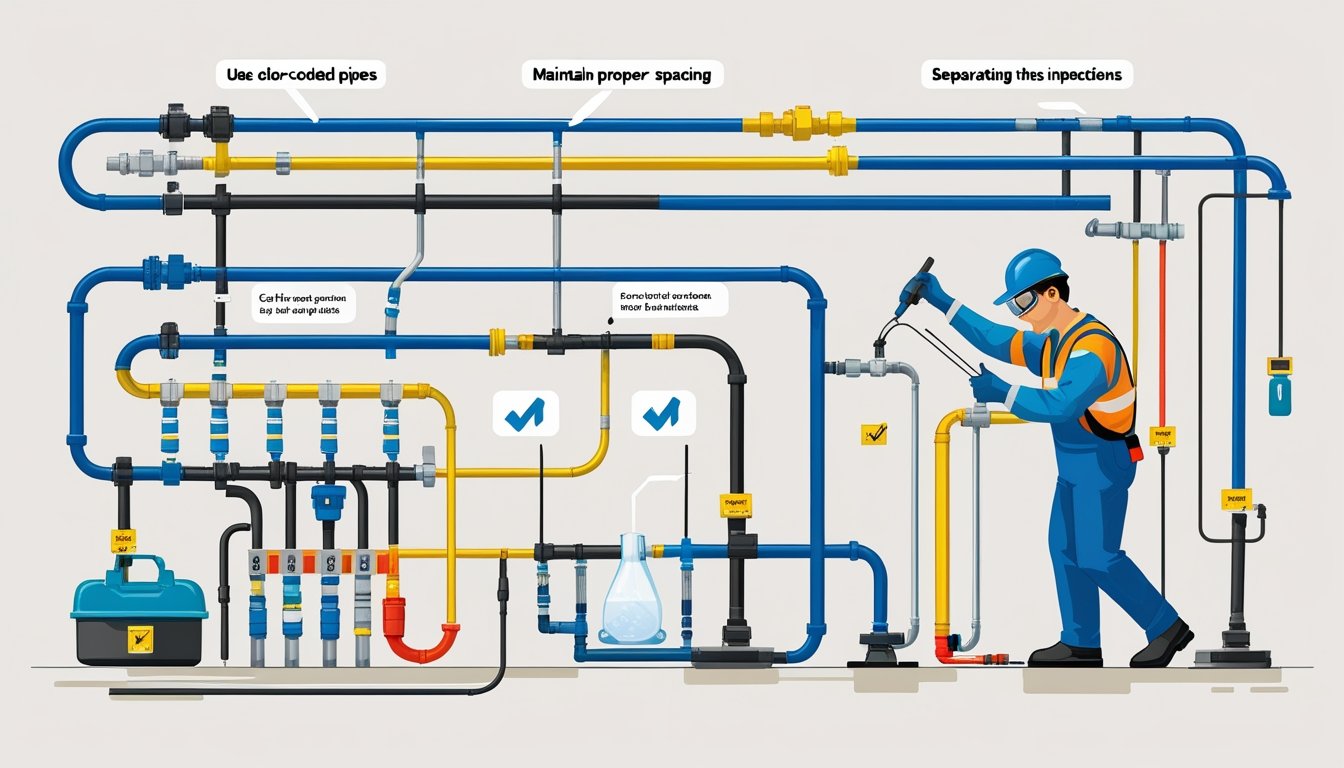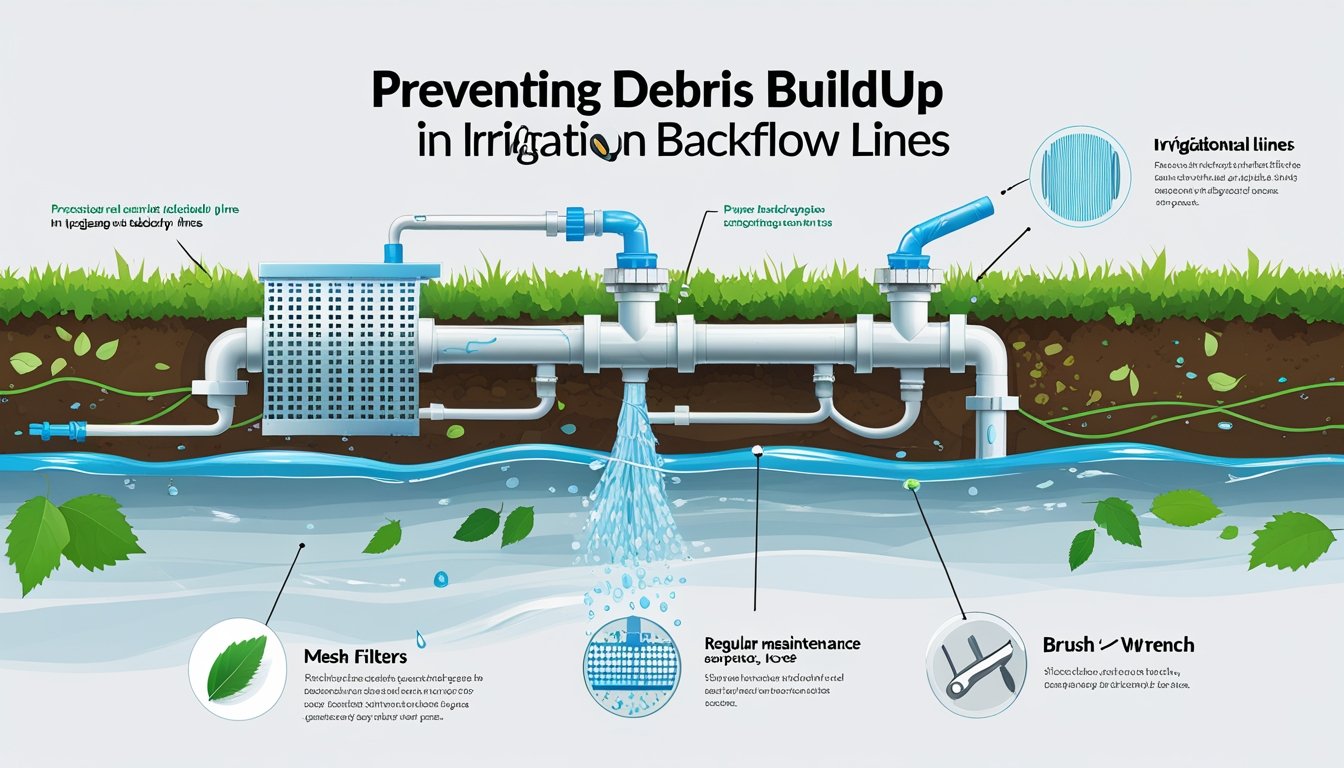If you’ve got a backflow preventer on your property, protecting it is just as important as having the device itself. A backflow cage adds a sturdy layer of security, blocking theft, vandalism, and tampering. This kind of protection keeps your water supply safe and helps your backflow preventer do its job, meeting local safety standards.
A backflow cage also gives you some peace of mind. Without one, repairs or replacements can get expensive and drag on if someone messes with your preventer. In San Diego County, Pacific Backflow makes custom cages that fit your system perfectly, so you’re set for the long haul.
It’s a simple step, but it can save you a lot of hassle and protect your clean water supply. You want your backflow device to work without interruption, right? A cage is a smart way to help make sure it does.
What Is a Backflow Cage?
A backflow cage is a protective device that shields your backflow preventer from damage, theft, and tampering. It also lets you get to your system easily for testing and maintenance. If you know what a backflow cage does and the types available, you can pick the right protection for your setup.
Purpose of Backflow Cages
Backflow cages keep your preventer safe from damage and unwanted attention. They block people or animals from messing with the device, which could lead to contamination or a breakdown.
If your equipment sits in a public or exposed spot, you need a cage. Otherwise, weather, vandals, or random accidents could easily damage your backflow device.
A lot of water authorities require these cages to meet safety standards. They help keep your water supply safe by making sure the preventer stays up and running.
How Backflow Cages Work
A backflow cage wraps your preventer in a tough metal frame, usually steel or iron. It fits snugly around the device, but doesn’t block key parts like test ports or valves.
You can lock or fasten the cage tight, stopping unauthorized access. When you need to check or fix something, you can open it up pretty easily.
The cage’s design lets air flow through, so there’s less risk of rust or freezing. Some come with extras like raised bases or weather shields for more protection.
Types of Backflow Cages
There are a few main types of backflow cages, depending on what you need:
- Standard Metal Cages: Basic, lockable steel frames. Good for most homes and businesses.
- Custom-Fitted Cages: Built to match your device’s size and shape. They fit better and offer stronger security.
- Freezing-Proof Cages: For colder spots, these have insulation or covers to keep things from freezing up.
- Large Protective Enclosures: Designed for multiple devices or industrial setups. These are heavy-duty and sometimes include alarms.
Pick a cage based on your property’s location, weather, and local rules. Pacific Backflow can help you choose and install the right one.
Enhanced Security for Backflow Preventer Devices
Adding a protective cage to your backflow preventer brings in some serious security. It blocks theft, cuts down on vandalism, and keeps out people who shouldn’t be near your equipment. All this helps keep your water supply safe and your system running like it should.
Protection Against Theft
Backflow preventers have valuable metal parts, so thieves sometimes target them. A cage makes it tough for anyone to steal or remove the device. The steel frame stands up to cutting or prying.
When you lock up your preventer, you lower the risk of pricey replacements and avoid water system interruptions caused by theft. Pacific Backflow offers custom cages for a snug fit and long-term protection.
Prevention of Vandalism
Vandalism can wreck your backflow preventer, leading to leaks or system breakdowns. A cage acts like armor, blocking intentional damage like hitting, scratching, or tampering. That means fewer repairs and less downtime.
Cages also show would-be vandals that the device is protected. In public or open spaces, this kind of protection matters even more.
Discouraging Unauthorized Access
Not everyone should get near your backflow preventer. If someone tampers with it, you could end up with contamination or system issues. A cage creates a barrier—only folks with the right key or permission can get in.
This extra security helps you meet local water safety laws and keeps your system in line. It’s just good to know your water’s safe. Pacific Backflow uses strong locks and solid materials to block unwanted access.
Preventing Costly Repairs
A backflow cage shields your preventer from damage and keeps your water system running smoothly. This protection can save you from expensive repairs, cut down on maintenance, and help you dodge problems that might throw your home or business off track.
Reducing Risk of Damage
A cage works like a shield, protecting your preventer from accidents, tampering, or vandalism. Without it, your device could break, letting contaminated water flow back into your clean lines.
Broken backflow devices often mean leaks or even total failure. Fixing or swapping out these parts can get pricey fast. A cage helps you avoid these costly repairs by keeping your preventer in good shape.
Minimizing Maintenance Expenses
Backflow maintenance isn’t cheap if your device is exposed to weather or dirt. A cage keeps out debris and shields the device from the elements, so it’s less likely to clog or fail.
With a cage, you’ll spend less on fixes caused by poor device condition. You’ll also need fewer repairs overall. Professional outfits like Pacific Backflow can check and maintain your protectors to head off issues before they get expensive.
Avoiding Business Disruptions
For business owners, a failed preventer can mean water contamination or breaking the rules. That could force you to shut down, costing you time and money.
A cage lowers the chance of failure or tampering that might close your doors. Keeping your system safe and working means business as usual. Plus, you stay on the right side of local water safety rules.
Compliance With Local Regulations
Installing a backflow cage helps you follow the rules that keep water safe and save you from headaches. Meeting city codes and insurance demands protects your property and your health.
Meeting Municipal Codes
Your cage needs to meet local plumbing codes to be legal. These rules help stop dirty water from flowing back into public supplies. In places like San Diego County, backflow prevention devices are required on most commercial, industrial, and some residential properties.
You’ll need regular inspections and testing, usually every year or six months. Only a licensed plumber or certified tester should handle this. Pacific Backflow can take care of inspections, installation, and repairs to keep you compliant.
If you skip these rules, you could face fines or legal trouble. Protect your water and your property by installing and maintaining a cage that meets every standard.
Supporting Insurance Requirements
Insurance companies often want proof that your backflow prevention measures meet safety codes. A properly installed cage shows you’re serious about preventing contamination risks. Sometimes, this can even help you get better coverage or lower rates.
If your property causes pollution from backflow, insurance might not cover the mess unless your devices are up to code. A cage adds physical protection, which insurers like to see.
Keep records of your installation, testing, and repairs. Your insurance provider could ask for these if you file a claim or renew your policy. Using a pro like Pacific Backflow means you get the paperwork and stay on top of insurance rules without the hassle.
Improved Water Safety
A backflow cage helps protect your water system in ways that matter. It keeps your preventer secure and stops dirty water from sneaking into your clean supply. That’s a big deal for your home or business water quality.
Safeguarding Water Quality
Your water stays safe when you keep contaminants out of your pipes. A cage guards your preventer from damage or theft, so it keeps working the way it should. When the preventer’s secure, it blocks unsafe water from flowing backward into what you drink.
This is especially important if you’ve got irrigation systems, outdoor hoses, or plumbing that might let dirty water move the wrong way. A locked cage keeps the device from breaking or being tampered with, which could let harmful stuff into your water.
Preventing Contamination Incidents
Backflow contamination happens when water reverses and mixes dirty water with your clean supply. That’s a health risk and a headache you don’t want. A cage helps prevent these incidents by keeping the preventer safe and working right.
With a cage, you also avoid accidental damage during lawn care or routine maintenance. That lowers the chance of leaks or failures that could let in contaminants. Pacific Backflow installs reliable cages all over San Diego County, helping you keep your water safe day after day.
Extended Lifespan of Backflow Devices
A backflow cage helps your device last longer by blocking damage and cutting down on daily wear. These protections save you money in the long run and help keep your water supply secure.
Protecting Against Environmental Damage
Your backflow device deals with sun, rain, wind, and dust all the time. Those elements can cause rust, cracks, or other problems that shorten the device’s life.
A cage acts as a barrier, keeping out dirt, debris, and harsh UV rays. That means your device stays cleaner and doesn’t wear out as fast.
It also stops damage from animals or accidents, which could snap fragile parts and lead to repairs. Protecting your equipment helps you avoid replacing it too soon.
Reducing Wear and Tear
Every time your preventer gets bumped or handled roughly, it ages faster. A cage cuts down on daily wear by blocking knocks and tampering.
It also keeps thieves and vandals at bay. With a sturdy cage, you’re less likely to deal with unauthorized interference that could cause breakdowns.
Regular care plus a strong cage makes your device more reliable year after year. That’s especially important if you’ve got irrigation or fire systems hooked up and need everything to work when it should.
Pacific Backflow builds tough, custom cages that fit your preventer just right, helping you keep your system running and avoid pricey replacements.
Aesthetic and Space Considerations
Putting in a backflow cage doesn’t mean you have to ruin your outdoor space or the look of your place. You can find options that blend in and fit where you need them—safe and out of the way.
Low-Profile Design Options
Some cages are designed to be low-profile so they don’t stick out. These have a slim, compact build that hugs the wall or sits close to the ground. Neutral colors like gray or black help them blend with fences or landscaping.
Low-profile cages keep your yard looking neat and don’t draw attention. They protect your preventer without being an eyesore. Some even let you plant around them, so the cage almost disappears but still does its job.
Optimizing Placement
Where you put your backflow cage really matters. If you place it close to the main water line entry, you’ll have easy access for testing and repairs. But you probably don’t want it in the middle of a busy walkway or somewhere it blocks the path.
Try spots near a fence or by an outdoor utility area. That way, the cage stays out of the way but you (or a tech) can still find it fast when it’s time for maintenance. At Pacific Backflow, we help folks figure out a location that feels secure, convenient, and doesn’t mess up the look of your yard. Getting the placement right keeps the device safe without hogging valuable space.
Easy Maintenance and Monitoring
A backflow cage makes it easier to keep up with maintenance and inspections while also protecting your backflow preventer. You can check the device fast, see if it’s working, and avoid those annoying delays or surprise damage. That’s time saved—and fewer expensive repairs down the road.
Accessible Inspection and Servicing
With a backflow cage, your preventer stays easy to reach for routine checks and repairs. You can open the cage quickly, so technicians don’t have to mess around just to get started. Inspections go faster, and servicing doesn’t turn into a headache.
Since the cage shields the device from damage or tampering, it stays in better shape and you’re less likely to face sudden breakdowns. The cage also helps protect against theft or vandalism, which means you don’t have to budget for unexpected costs or interruptions.
Keeping your backflow preventer accessible makes it much easier to stay on top of required testing (those local laws aren’t going away). Pacific Backflow serves San Diego County with cages that actually balance security and access, so inspections aren’t a hassle.
Simplifying Upkeep
When your backflow preventer sits inside a solid cage, maintenance just gets simpler. The cage keeps out dirt, animals, and the worst of the weather. You’ll see less wear and tear, so the unit lasts longer and doesn’t need constant repairs.
A good cage also keeps maintenance safer for everyone. It blocks accidental bumps from workers or passersby, so the device stays up to code. Scheduling regular upkeep is easier since the cage unlocks when you need it, but otherwise stays locked down. With Pacific Backflow’s cages and services, you get solid protection and quick access for maintenance, so your water system keeps running safely and in compliance.
Peace of Mind for Property Owners
Putting in a backflow cage gives you strong protection for your backflow preventer. It keeps the device safe from theft, vandalism, and the random accidents that happen. Knowing your backflow system is secure means you spend less time worrying about surprise repairs or water contamination.
A sturdy cage also helps you stick to local water safety rules, so you avoid fines or penalties. When your system’s protected, you’re also helping keep the water supply clean for everyone around you.
With Pacific Backflow, you get more than just a cage. Our team handles reliable testing, repairs, and installations to keep your device working right. We even take care of the paperwork, so you don’t have to chase down compliance forms or deadlines.
Benefits at a glance:
BenefitWhat it Means for You Theft and vandalism protectionYour device stays safe and functionalCode complianceNo fines or regulatory troubleReduced risk of water contaminationCleaner, safer water supplyExpert service supportQuick, professional help when needed
You can feel good knowing your backflow system’s protected and maintained. That peace of mind means you can actually enjoy your property without stressing over water safety.
Frequently Asked Questions
Adding a backflow cage gives your preventer extra protection and helps it last longer. It cuts down on damage, theft, and tampering, all while keeping your water supply safe and up to code.
What are the advantages of using a backflow cage for my backflow preventer?
A backflow cage shields your device from physical damage and theft. It stops tampering, which can mess up the system and put your water at risk. That means your system works longer and stays safer.
How does a backflow enclosure protect my water supply?
The cage blocks unauthorized access to your backflow preventer. It shields the device from weather and vandalism too. All of this helps maintain proper function, which is key for keeping your drinking water clean.
What should I consider when choosing a backflow cage?
Go for a cage built from tough, weather-resistant materials. Make sure it fits your backflow preventer snugly for the best security. Check that it meets local regulations and can be locked up easily.
Are there different types of backflow enclosures, and how do they vary?
Definitely—cages come in all shapes and sizes. Some are basic metal cages for simple protection. Others are custom-fitted, with reinforced locks and extra durability for spots that need more security.
How can installing a backflow enclosure save me money in the long run?
By stopping theft and damage, a cage lowers the risk of expensive repairs or replacements. It also helps you avoid fines by keeping your system in line with water district rules.
What are the maintenance requirements for backflow cages?
Honestly, maintenance isn’t too complicated. Just take a look at the cage every so often—make sure the locks and panels feel sturdy, and keep an eye out for any rust sneaking in. If you see dirt or leaves piling up, clear them away before they turn into a problem or make it tough to reach your device.
Pacific Backflow puts together custom-fitted backflow cages that are built to last. If you’re in San Diego County, their team can help you stay both compliant and protected.











